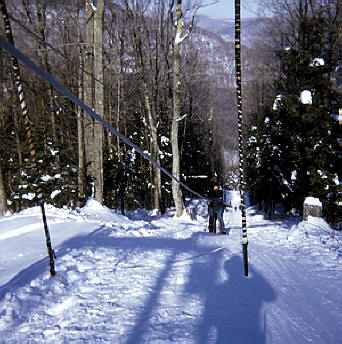

BUSINESS
RESTRICTIONS
and
SAFETY
|
By the mid-sixties, the number of ski areas in New York reached their peak. Within the boundaries of any state, New York, by far lead the way. In the Catskills, a new and powerful ski area, Hunter Mountain Ski Bowl, took over the masses with chairlifts and its claim as the "Snowmaking Capitol of the World". During the winter months, skiing was the "thing" to do and many families experienced the sport in record levels. With more people on the slopes, insurance companies realized greater liability and that cost with transferred to the owners. Since the insurance rate was based on a percentage of each lift ticket sold, that "cut" began to rise. |
|
During this time period, New York State shifted the responsibility of lift inspection to the Department of Labor. With this change, new and stiffer rules now regulated safety. Since changes in lift technology had improved, the simple rope tow was looked upon as lesser and more dangerous method uphill. As a result, rules regarding its safety fell under closer inspection. |
|
|
|
|
|
After several attempts to improve the previous safety devices, the brothers created a simple method which the Department of Labor approved and adapted as "industry standard". At the top of each tow, two bamboo poles were hung vertically approximately six feet apart. A rope was attached to each pole at its bottom. This rope was connected to a metal hinge and when extended would act as an off switch to the ignition of the industrial engines. |
|
Many safety signs were strategically placed which advised skiers. |
|
|
|
The horizontal distance between the down and up rope had to be maintained. As a result, additional wheels were added to conform to this regulation. |
|
|